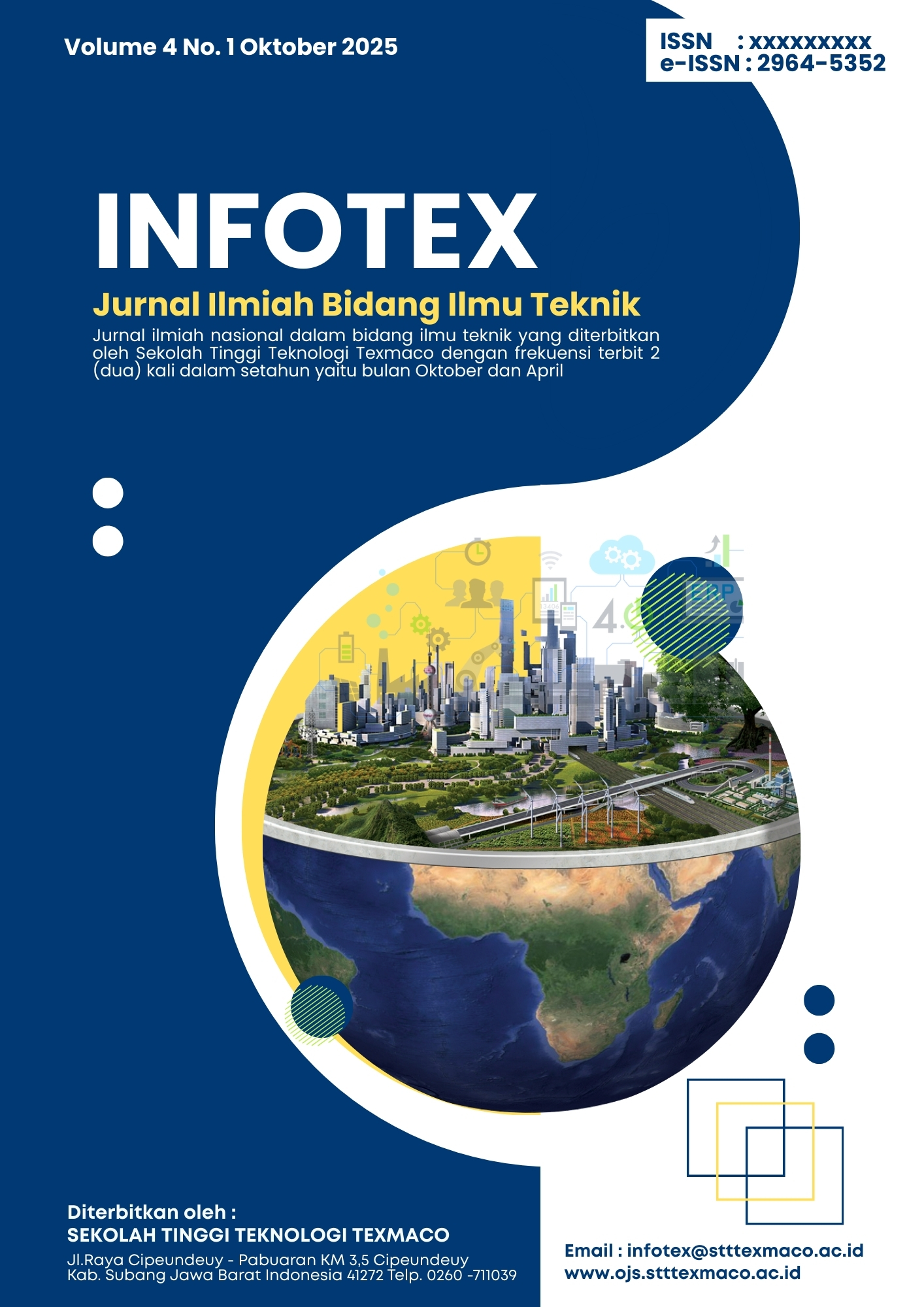Produksi Biogas Dengan Campuran Kotoran Sapi Dan Eceng Gondok (Eichornia Crassipes)
Keywords:
Biogas, Cow dung, Water hyacinth, Anaerobic fermentation, Renewable energy.Abstract
Biogas is a renewable energy source produced through the anaerobic fermentation of organic matter by microorganisms, with methane (CH₄) as its main component. This study evaluates the potential biogas production from a mixture of cow manure and water hyacinth (Eichhornia crassipes) in three different ratios: 1:1, 1:2, and 2:1. Fermentation was carried out for 15 days in a 19-liter reactor using EM4 as a bioactivator. Gas pressure was measured using a U manometer, and biogas volume was calculated based on the volume of a motorcycle inner tube. The best result was obtained at a 2:1 ratio, yielding the highest pressure of 103.481 N/m² and a maximum volume of 47.2 liters. The fermentation temperature ranged from 24–27°C, which is optimal for mesophilic microbes. The dominance of cow manure enhanced substrate decomposition and gas production, while water hyacinth acted as a supporting lignocellulosic material. This study shows that organic waste mixtures can be effectively utilized as an alternative energy source.
References
[1]. V. Alapján-, “Produksi bioagas dari campuran kotoran sapi,” pp. 1–23, 2016.
[2]. M. Sri Wahyuni, “Panduan Praktis Biogas,” Penebar Swadaya.
[3]. H. O. dan N. C. B. Buckman, “Ilmu Tanah. Bharata Karya Aksara.”
[4]. E. Sarwono, F. Subekti, and B. N. Widiarti, “Eichhornia Crassipes Mixture Variation Effect and Cow Rumination Content on Biogas Production,” Environ. Technol. J., 2018.
[5]. Deli Rahmalia Sumady, “Pengaruh suhu, rasio C/N danpPenambahanbBioaktivator Em4 terhadap produksi biogas dari sampah buah-buahan,” pp. 69–73, 2008.
[6] . D. Irawan and E. Suwanto, “Pengaruh Em4 (Effective Microorganisme) Terhadap Produksi Biogas Menggunakan Bahan Baku Kotoran Sapi,” Turbo J. Progr. Stud. Tek. Mesin, vol. 5, no. 1, pp. 44–49, 2017, doi: 10.24127/trb.v5i1.118.
[7]. A. Yonathan, A. R. Prasetya, and B. Pramudono, “Produksi Biogas Dari Eceng Gondok (Eicchornia Crassipe ) : Kajian Konsistensi Dan Ph Terhadap Biogas Dihasilkan,” J. Teknol. Kim. dan Ind., 2013.
[8]. S. W. TRY, “FERMENTASI ANAEROB DARI CAMPURAN KOTORAN AYAM DAN KOTORAN SAPI DALAM PROSES PEMBUATAN BIOGAS,” JURNAL ILMIAH UNAND 2.
[9 ] Appels, Lise, Ado Van Assche, Kris Willems, Jan Degrève, Jan Van Impe, and Raf Dewil. 2011. “Bioresource Technology Peracetic Acid Oxidation as an Alternative Pre-Treatment for the Anaerobic Digestion of Waste Activated Sludge.”
[10 ] Buckman, H. O. dan N. C. Brady. 1982. “Ilmu Tanah. Bharata Karya Aksara.” 1982.
Deli Rahmalia Sumady. 2008. “Pengaruh Suhu, Rasio C/N Dan p PenambahanbBioaktivator Em4 Terhadap Produksi Biogas Dari Sampah Buah-Buahan,” 69–73.
[11] Eichornia, Gondok, Crassipes Dan, and Muhammad Abrar Firdausy. 2016. “PRODUKSI BIOGAS DARI CAMPURAN ECENG BIOGAS PRODUCTION OF MIXED WATER ( EICHORNIA CRASSIPES ) AND CHICKEN MANURE .”
[12] Rahayu, D R, P Ardani, N Hendriani, and S Rachmania Juliastuti. 2012. “Pembuatan Biogas Dari Eceng Gondok (Eichornia Crassipes) Pretreatment Dengan Jamur Phanerochaete Chrysosporium Dan Trichoderma Harzianum.” Teknik POMITS.
[13] Sanjaya, Denta. 2015. “Produksi Biogas Dari Campuran Kotoran Sapi Dengan Kotoran Ayam.” Fakultas Pertanian.
[14] Soebiyanto Tjokroadikoesoemo, P. 1986. “HFS Dan Industri Ubi Kayu Lainnya.” Gramedia. Jakarta. 1986.
[15] Surendra, K. C., Devin Takara, Andrew G. Hashimoto, and Samir Kumar Khanal. 2014. “Biogas as a Sustainable Energy Source for Developing Countries: Opportunities and Challenges.” Renewable and Sustainable Energy Reviews. 2014.
Downloads
Published
How to Cite
Issue
Section
License
Copyright (c) 2025 Achmad Anwari, Adang Saepudin, Sutrisno, Afif Khaerul

This work is licensed under a Creative Commons Attribution-ShareAlike 4.0 International License.






